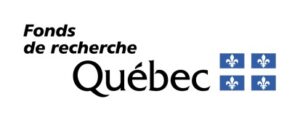Infrastructure and resource list
Material and equipment
| INSTITUTION | INFRASTRUCTURE | CONTACT |
| CABO | Remote sensing equipment such as drones | Etienne Laliberté, UdeM |
| Station SIRENE de Sherbrooke | Other remote sensing equipment | Jérôme Théau, UdeS |
Web Infrastructures
| INSTITUTION |
INFRASTRUCTURE | CONTACT | |
| Québio |
Interface for managing the storage of biodiversity data 0r metadata | Guillaume Laroque, CSBQ | |
| Portail de Biodiversité Québec |
Includes an interactive dashboard that offers, in real time, an overview of the biodiversity distribution in Quebec and its evolution. Through this site, three databases are accessible : |
Dominique Gravel, UdeS Guillaume Laroque, CSBQ |
|
|
BdQc monitoring database containing biodiversity data collected every 5 year throughout the Quebec territory. |
|||
|
Database containing over 24 million biodiversity observations and that integrates open sourced data (e.g. GBIF, eBird, eButterfly), government data, and research data. |
|||
| Mapping server that allows data from the other two systems to be linked to environmental layers and thus analyze the causes of observed changes in biodiversity | |||
Laboratories
| INSTITUTION |
INFRASTRUCTURE | CONTACT | |
| McGill – Gault Nature Reserve |
The Gault Nature Reserve is affiliated with the Science faculty of McGill University and contributes to scientific research as well as the teaching of natural sciences. | David Maneli, McGill Gault | |
| LEAP | The Large Experimental Array of Ponds (LEAP) at Gault Nature Reserve helps conduct experiments in aquatic ecosystems and on the factors causing changes in biodiversity and the functioning of those ecosystems. | ||
| AEOS | The Adaptable Earth Observation System (AEOS) serves as a laboratory for advanced ecological research as well as meteorological conditions. | ||
| Université de Montréal | UdeM offers two centres that are accessible to members of the QCBS | ||
| Biodiversity Centre | The Biodiversity Centre, located on the Botanical Garden of Montreal helps the conservation and computerization of important collections of plants, insects and fungi. | ||
| Biology Station of the Laurentides |
The Biology Station of the Laurentides helps training qualified scientists as well as responsible citizens, while enabling research to be conducted in a protected environment. QCBS members receive a 10% discount. |
Colin Favret, UdeM | |
| Université de Laval | The High-Performance Greenhouse Complex helps strengthen cutting-edge research activities in the fields of greenhouse cultivation, genomics and biotechnology. | ||
| Université de Sherbrooke |
The Johnville Bog and Forest Park is a protected area and a research station. It is co-owned by the Université de Sherbrooke, Bishop’s University and Nature Cantons-de-l’Est. | ||
Scientific expertise
The infrastructures offered by the QCBS include a great diversity of Highly Qualified Professionals (HQP) :
- Specialists in using scientific equipment (drones, specialized equipment)
- Database specialists
- Website and software programmers
- Experts in bioinformatics
- Infrastructure administrators and lab technicians
They are under permanent contracts with their respective institution, or are long-term employees, sometimes co-financed by the QCBS
Research professionals
Highly Qualified Professionals for the KH/K2A
- Martin Lefrançois –Characterization and Monitoring of Genomic Biodiversity
- Carole Sinou – Characterization and Monitoring of Genomic Biodiversity
Tariffs
The sharing of infrastructures includes access to preferential rates to cofinance :
- Highly qualified professionals (HQP) responsible for training students (Hubs of expertise support and sharing knowledge program)
- The students so that they can participate in field or laboratory training (Excellence Award)
Managing the infrastructures
The management is defined by :
- The administrative team of each institution (or research station),
- The agreement between the infrastructure managers and the users members of the QCBS (hubs of expertise), or
- The agreement within the the research group that shares the infrastructure (LEAP, Phytotron)
